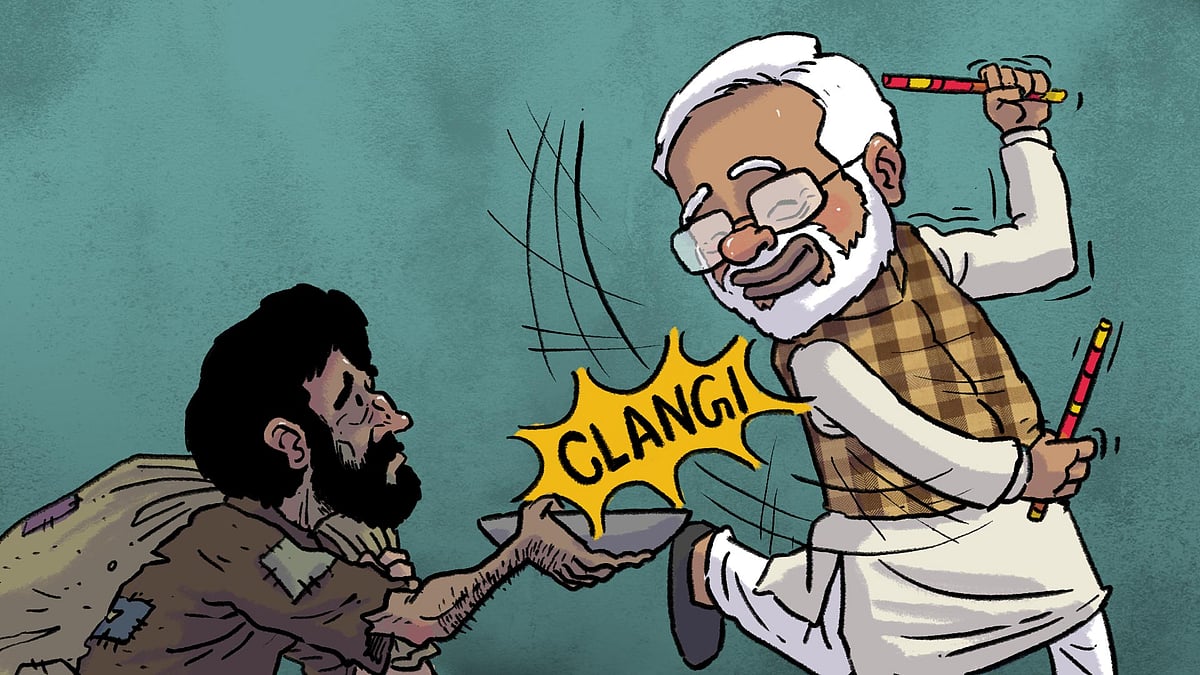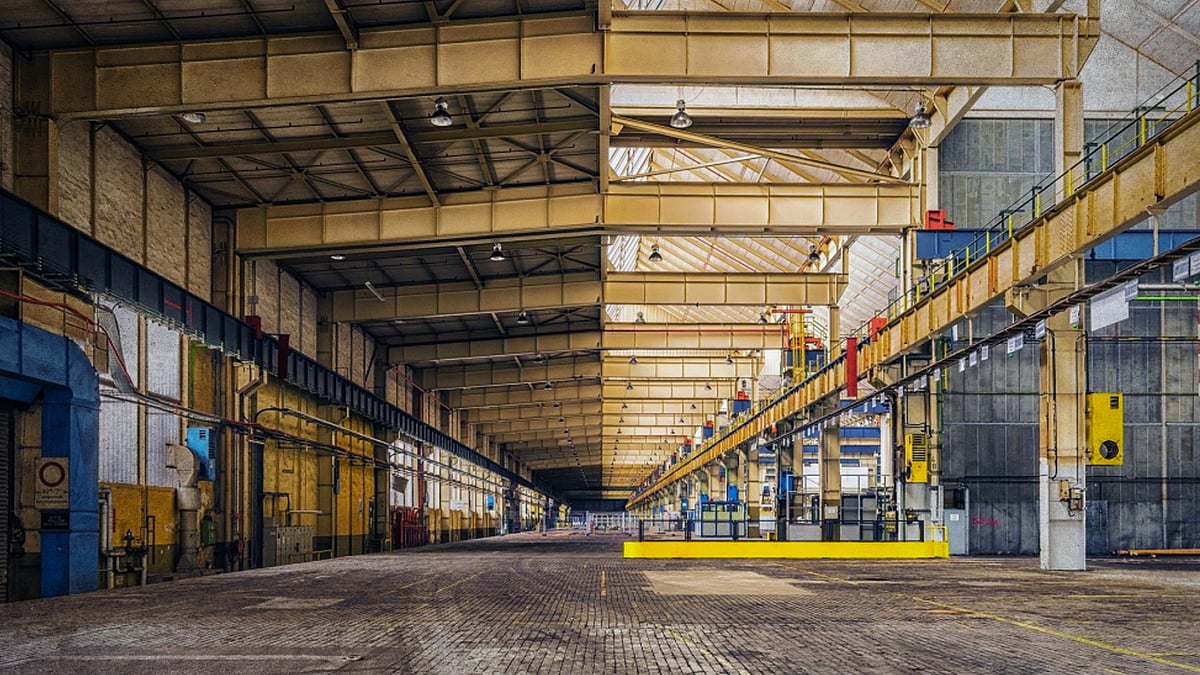Coronavirus: Sitharaman's relief package signals states have to lead the healthcare response
The package of Rs 1.7 lakh crore focuses on food security and cash transfers to migrant workers and the poor.
It’s Day 2 of the 21-day nationwide lockdown in India, and we now have 694 active cases and 16 deaths. As the number of cases continues to rise, the finance ministry has swung into action. Finance Minister Nirmala Sitharaman announced a welfare package worth Rs 1.7 lakh crore, aimed at addressing the concerns of the poor.
Called the Prime Minister Gareeb Kalyan Scheme, the package will focus on food security and cash transfers to migrant workers and the poor. Sitharaman said that 80 crore people will benefit from it.
Here’s a quick summary of what this package covers:
Medical insurance cover of Rs 50 lakh per health worker will be provided for three months.
MNREGA wages will be increased from Rs 182 a day to Rs 202. This is expected to benefit five crore families and will result in additional income of Rs 2,000 per worker.
Farmers who currently receive Rs 6,000 per annum through the PM-KISAN scheme will now be given the first instalment upfront. Around 8.69 crore farmers are expected to benefit.
Cash transfers under the scheme will happen through direct benefit transfers. There are eight categories of beneficiaries, including farmers, women, MGNREGA workers, pensioners, the disabled, organised sector workers, and self-help groups.
The Centre will pay the employees' provident Fund contribution of the employer and of the employee for firms with upto 100 employees for the next three months.
Women holding bank accounts under the Jan Dhan scheme will receive Rs 500 per month for the next three months.
Collateral-free loans for self-help groups for women will be doubled from Rs 10 lakh to Rs 20 lakh. Sixty-three lakh self-help groups are expected to benefit.
Women will receive free cylinders for the next three months under the Ujjwala scheme. Additionally, 8.3 crore below poverty line families will get free LPG cylinders for three months.
Under the Buildings and Other Construction Workers’ Fund, state governments will be directed to utilise the existing Rs 31,000 crore welfare fund for the benefit of 3.5 crore construction workers.
This package, again, is worth Rs 1.7 lakh crore, so it’s quite large.
But one sector that was left out in all of this: banking. Banks expected some regulatory relaxation in the NPA classification norms. In the post-lockdown scenario, the current default period of 90 days is expected to push many companies into the bad loan bracket. This is expected to worsen an already terrible bad loan situation in the country. After the health crisis, an economic crisis looms on the horizon.
Do remember that this pandemic has hit right after Yes Bank was put under moratorium while the government cobbled together a rescue deal for it. Everything is not hunky dory in our banking system and this epidemic will just put further pressure on it. According to an answer given in Lok Sabha, as of December 2019, gross NPAs of nationalised banks amounted to Rs 5,56,991 crore. If the government doesn’t address the NPA classification criteria right now, this amount will only increase.
Along with Sitharaman’s relief package, Bihar chief minister Nitish Kumar announced a grant of Rs 100 crore for the coronavirus relief fund which will include shelter and food for labourers, rickshaw pullers, roadside vendors, and the poor. He said shelter camps will be established on a priority basis. Kumar had earlier announced that his government will bear the treatment costs of coronavirus patients. He said all ration card-holding families in the state will get an assistance of Rs 1,000 each.
Last week, Kerala had announced a Rs 20,000 crore relief package. The state’s finance minister, Thomas Isaac, wrote a piece, in which he said, “With its third consecutive statewide crisis, Kerala is at its wits end. There is a limit to what the state can do, and we will be in a serious crisis if the Centre does not help.”
The last part is very important.
If you notice how governments at different levels are reacting to the crisis, it becomes clear that while state governments are mostly handling the healthcare nitty-gritties involved, the central government has taken on a supporting role. This is actually the way it should work since health and sanitation is a state subject. The Centre is supposed to fund schemes and give money to states, while the states have to implement these schemes and make sure the money is utilized on the ground.
There is no point blaming one level of government over the other because, ultimately, they have to find the money and work together to figure out how to spend it efficiently in order to alleviate the suffering of the vulnerable people everywhere.
Testing strategy
Throughout this pandemic, the testing for coronavirus has been a big problem. For one, it’s not an easy test to do and, two, companies supplying these kits are selling it at high prices.
The Indian Council of Medical Research has invited quotations from manufacturers for supply of one million kits to test patients suspected of suffering from COVID-19. These kits have to be supplied to the medical research body’s regional facilities in Mumbai, Delhi, Dibrugarh, Chennai, Hyderabad and Bhopal.
The bidding for the tender for this kit ended today at 2.30 pm so there is rapid progress expected on this front. According to Livemint, the qualification criteria is only limited to systems which have received approval from US Food and Drug Administration, the European regulator’s CE in-vitro diagnostics (IVD) certification, or a validation certificate from the ICMR’s National Institute of Virology in Pune.
Livemint reports: “So far, while Roche Diagnostics ‘cobas’ and Co-Diagnostics’ Logix Smart COVID-19 test kits have US FDA’s emergency use authorisation, diagnostics kits of MyLabs and Altona have been validated at NIV, Pune.”
I highly recommend you watch the Consti-tuition episode on Healthcare to understand the responsibilities of different levels of government. It will help you hold them all accountable and ask the right questions.
Let’s face it, our healthcare system is quite bad on any given day. This was very evident a few years ago when the Japanese encephalitis hit Uttar Pradesh. Multiply that several times over, apply it to the entire country, consider that Covid-19 is highly contagious, and you get the picture of how grave a crisis this pandemic is.
Right now, we are in crisis mode. But when this is over – which I sincerely hope is in a couple of months – it should ideally make us ask a lot of questions about our healthcare system. Our entire strategy at the moment is completely dependent on the availability of testing kits. I’m no expert, but logically, that just sounds like a bad strategy.
Essentially, the more we test, the more positive cases are detected. The more cases we detect, the more people are admitted in hospitals, thus increasing the burden on hospitals and health workers. This will result in more collateral deaths because of non-availability of beds.
If you see the situation in other, more developed countries, where healthcare systems are better than ours, even they are straining to handle the influx of patients. Entire countries are being brought to their knees.
In China, they were able to build a hospital in just 10 days. But I doubt something like that is possible in India. It’s frightening to think how bad things can get from this point on.
When the dust settles, we really need to think about spending more on healthcare and relooking at our national health policy. If nothing, just include a section in the policy called, “What to do in case of a pandemic”.
How are things in the US?
Earlier this week, the World Health Organization warned that the US risked being the “next epicentre” of the outbreak. WHO spokesperson Margaret Harris said 85 percent of new cases were in Europe and the US, and of those, 40 percent were in the United States.
Today the US Senate approved an over $2 trillion package to stimulate the sagging economy. This is also the largest rescue package in the nation’s history and provides a lifeline to suffering Americans, depleted hospitals and an economy ravaged by the rapid spread of the novel coronavirus.
After weeks of negotiations, a deal was thrashed out between Republicans, Democrats and the White House, to include in the package cash payments to American taxpayers; several hundred billion dollars in grants and loans to small businesses and core industries; medical equipment to hospitals and unemployment benefits. The Senate cleared these measures by an overwhelming majority.
Interestingly, the bill has provisions that block Trump and his family members, as well as other top government officials and members of Congress, from accessing loans or investments from Treasury programmes in this stimulus package.
 Why India doesn’t seem to care about its poor even during a pandemic
Why India doesn’t seem to care about its poor even during a pandemic India is a potential graveyard of jobs, as coronavirus-hit companies fight an existential crisis
India is a potential graveyard of jobs, as coronavirus-hit companies fight an existential crisis
